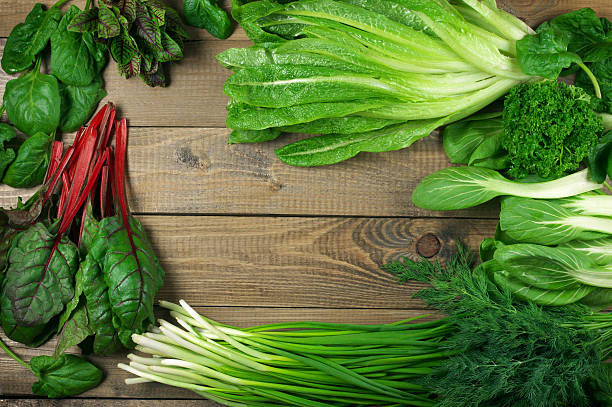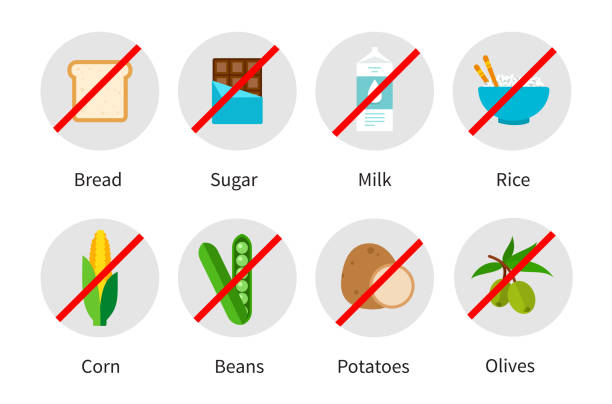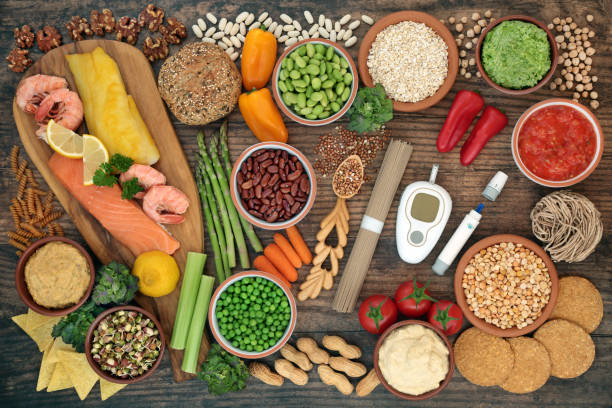Managing blood sugar is key to staying healthy—whether you have diabetes, prediabetes, or just want to feel your best. The good news? What you eat can help. Choosing the right foods can make a big difference. Some foods help keep your blood sugar steady, giving you more energy and fewer spikes.
Others may cause it to rise too quickly. When you focus on healthy choices, you support your body, improve your mood, and lower your risk for health problems. It’s a simple step with powerful results.
Let’s explore 12 proven foods that help reduce blood sugar levels. These foods are backed by science and easy to add to your meals. They work by slowing sugar absorption, boosting insulin function, or fighting inflammation. Each one offers unique nutrients that support better blood sugar control.
The best part? You don’t need a special diet. Just small changes—like swapping one food for another—can lead to real results. Whether you’re cooking at home or eating out, these smart picks fit right in.
Why Blood Sugar Control Matters
High blood sugar can lead to serious health problems like heart disease, nerve damage, and kidney issues. The CDC warns that even prediabetes puts you at risk. But by making smart food choices, you can keep your blood sugar in check and feel more energized every day.
When blood sugar stays high for too long, it can harm your organs and slow down healing. You may feel tired, thirsty, or even dizzy. Over time, this can affect your daily life. The good news is that healthy eating can help. Foods rich in fiber, healthy fats, and key nutrients can support your body and lower your risk. With the right habits, you can protect your health and boost your well-being.

1. Leafy Greens
Spinach, kale, and collard greens are low in carbs and packed with fiber. These greens help slow the absorption of sugar into the bloodstream. This means your blood sugar rises more slowly after meals, which helps avoid spikes. They’re also rich in vitamins like A, C, and K, along with minerals like magnesium—an important nutrient for blood sugar control.
Benefits:
- High in magnesium, which helps with insulin sensitivity
- Rich in antioxidants to reduce inflammation
👉 Tip: Add a handful of spinach to your smoothies or salads.
2. Berries
Blueberries, strawberries, and raspberries are sweet but won’t spike your blood sugar. They’re full of fiber and antioxidants. The fiber helps slow down digestion, which keeps sugar from entering your blood too fast. Antioxidants, like anthocyanins, may also improve insulin response.
Benefits:
- Low glycemic index (GI)
- Helps improve insulin response
Study spotlight: Harvard researchers found that eating blueberries may lower the risk of type 2 diabetes.
3. Oats
Oats are a smart carb. They digest slowly, which helps avoid blood sugar spikes. That’s because oats are high in a special type of fiber called beta-glucan. This fiber forms a thick gel in the stomach, slowing down how fast sugar enters the bloodstream.
Benefits:
- Rich in beta-glucan fiber
- Promotes fullness and healthy digestion
Choose steel-cut or rolled oats over instant for better results.
4. Chia Seeds
These tiny seeds are rich in fiber and omega-3 fatty acids. They slow down how fast sugar enters your bloodstream. The fiber forms a gel-like texture in your stomach, which helps slow digestion and keeps blood sugar levels steady.
Benefits:
- Great source of fiber and protein
- Helps lower insulin resistance
Easy ideas:
- Stir into yogurt
- Add to smoothies
- Make chia pudding
5. Nuts
Almonds, walnuts, and pistachios are packed with good fats and protein. They help you stay full and avoid sugar crashes. These healthy fats slow digestion, which keeps your blood sugar steady after meals. The protein in nuts also helps repair cells and build muscle.
Benefits:
- Lowers fasting blood sugar
- Reduces hunger between meals
Snack smart: Grab a small handful (about 1 oz) daily.
6. Fatty Fish
Salmon, mackerel, and sardines are rich in omega-3s, which help lower inflammation and improve insulin sensitivity. This means your body can use insulin more effectively, helping to keep blood sugar levels in a healthy range. These fish are also high in protein, which supports muscle health and helps you feel full longer.
Benefits:
- Supports heart health
- Helps regulate blood sugar

7. Beans and Lentils
These legumes are high in protein and fiber. They digest slowly, which means a steady release of sugar into your system. Foods like lentils, chickpeas, and black beans help prevent sudden blood sugar spikes. The fiber keeps you full longer, while the protein helps build and repair body tissue.
Benefits:
- Helps improve blood sugar control
- Keeps you full longer
Best picks: Black beans, kidney beans, lentils, and chickpeas.
8. Eggs
Eggs are a low-carb, high-protein option that helps balance blood sugar levels. The protein in eggs slows digestion and keeps you feeling full, which can prevent sudden spikes and drops in blood sugar.
Benefits:
- Supports muscle repair and hormone balance
- Improves insulin sensitivity
Enjoy them boiled, scrambled, or in a veggie-packed omelet.
9. Greek Yogurt
Greek yogurt is thicker and has more protein than regular yogurt. It also has probiotics that support gut health. The extra protein helps keep you full and slows the rise of blood sugar after eating. Probiotics are good bacteria that help your digestion and may improve how your body uses insulin.
Benefits:
- Lowers blood sugar after meals
- Improves gut bacteria linked to better blood sugar control
Pick plain, unsweetened options to avoid added sugar.
10. Avocados
Avocados are high in monounsaturated fats and fiber. They help slow digestion and sugar absorption. This helps prevent sudden spikes in blood sugar after meals. The healthy fats also support heart health and may improve how your body responds to insulin.
Benefits:
- Keeps you full
- Lowers risk of metabolic syndrome
Add to toast, salads, or smoothies for a creamy, blood sugar-friendly boost.
11. Apple Cider Vinegar
While not a food in the usual sense, this pantry staple has powerful effects on blood sugar when taken with meals. Apple cider vinegar may help lower blood sugar by improving insulin sensitivity and slowing the digestion of carbs.
Benefits:
- Improves insulin sensitivity
- Lowers post-meal blood sugar
Tip: Mix 1–2 tablespoons with water before meals (consult your doctor first).
Study: Published in Diabetes Care, vinegar improved insulin sensitivity by 34% in people with insulin resistance.
12. Cinnamon
Cinnamon can help lower blood sugar and improve insulin response—especially when added to carb-rich meals. It works by helping your cells use sugar more effectively, which can lead to better blood sugar control. Some studies show that even small amounts—about half a teaspoon a day—can make a difference.
Benefits:
- Mimics insulin in the body
- Helps glucose enter cells more efficiently
Use Ceylon cinnamon for safer, long-term use.
How to Include These Foods in Your Diet
Adding these foods to your meals doesn’t have to be hard. Here are a few simple ideas:
- Breakfast: Oatmeal with berries and chia seeds
- Lunch: Salad with leafy greens, avocado, and boiled eggs
- Snack: Greek yogurt with walnuts and cinnamon
- Dinner: Grilled salmon with lentils and steamed greens

Foods to Avoid for Better Blood Sugar
To keep your levels steady, try to avoid:
- Sugary drinks (soda, sweet teas)
- White bread and pastries
- Processed snacks and chips
- Deep-fried foods
These can lead to blood sugar spikes and crashes.
Tips for Long-Term Blood Sugar Control
Controlling blood sugar isn’t just about food—it’s a lifestyle. Here are other helpful tips:
- Exercise regularly: Even a daily walk helps. Physical activity makes your body use insulin better and lowers blood sugar. Aim for at least 30 minutes most days.
- Stay hydrated: Water supports your kidneys in flushing excess sugar. Drinking enough water also helps you feel full and may prevent overeating.
- Sleep well: Poor sleep affects insulin and hunger hormones. Try to get 7 to 9 hours each night to help your body rest and recover.
- Manage stress: Stress can raise blood sugar levels. Deep breathing, meditation, or even a hobby you enjoy can help keep stress in check.
Learn more from National Institute of Diabetes and Digestive and Kidney Diseases (NIDDK).
Final Thoughts: Eat Smart, Live Well
You don’t need to overhaul your diet overnight. Just start by adding a few of these proven blood sugar-friendly foods to your routine. Small changes can lead to big results over time. Swapping one food for a healthier option can make a real difference.
For example, choose oats instead of sugary cereal or snack on nuts instead of chips. Over time, these simple choices can help keep your blood sugar steady, boost your energy, and improve your overall health. The key is to be consistent and build healthy habits, one step at a time.
Remember: Always check with your doctor or a registered dietitian before making major dietary changes, especially if you’re taking medication for diabetes.
Ready to Take Control of Your Blood Sugar?
Start today by picking just one food from this list to try this week. Which one will you choose?
📣 Tell us in the comments below—and don’t forget to share this post with someone who could use these tips!

